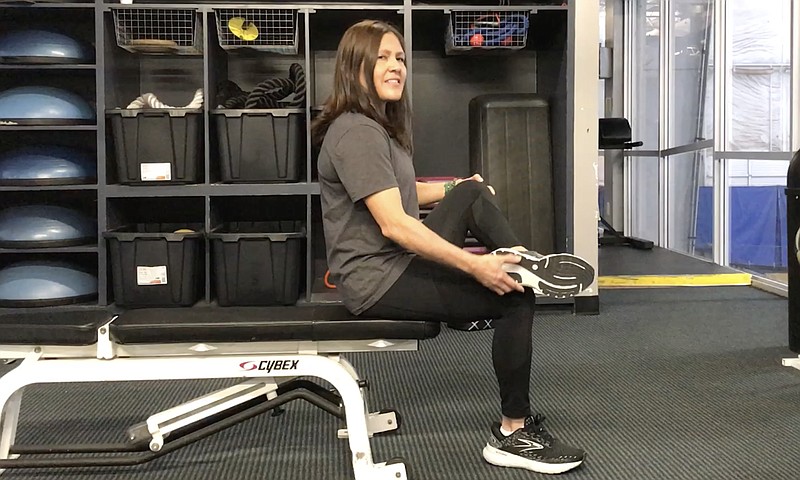The piriformis is a small muscle located deep in the hip joint. Its main role is to rotate the hip and move the leg away from the body (abduction). Lucky people probably haven't heard of this tiny little rotator, but it's critical for maintaining mobility later in life, as many other, less lucky people know.
This week, I will share some cool piriformis facts and present a stretch that's tailor made for this special muscle.
All muscles have an origin (where the muscle begins) and an insertion (where the muscle connects). If the origin and insertion points cross one joint, that's the only joint affected by the muscle's action. Many large muscles addressed in strength training, however, fall into the multi-joint (sometimes referred to as "biarticulate") category. The quadriceps, hamstrings, biceps and others have origin and insertion points that cross two joints.
Multi-joint muscles allow for complex movements, whereas single-joint muscles (monoarticular) usually perform a more basic function. The piriformis is a monoarticular muscle. It originates at the lowest portion of the spine known as the sacrum. This triangle-shaped muscle attaches at the top of the femur (greater trochanter), so the piriformis crosses the sacroiliac joint.
Anyone who has had chronic lower back pain has probably heard of the sacroiliac joint. The sciatic nerve runs through this space, and muscular imbalances can sometimes place pressure on the sciatic nerve. This creates pain, tingling and numbness that run down the leg. It's incredibly painful, and I have personal experience with sciatica ... not fun!
The piriformis plays an important role in maintaining a healthy sacroiliac joint, so it's critical to maintain strength and flexibility in this tiny abductor. Strength is usually not a concern, however, because the piriformis is active every time a step is taken. The bigger concern is flexibility, because the piriformis does not respond well to extended sitting. Thus, office workers, frequent travelers and sedentary individuals are at risk for developing inflexible piriformis muscles.
The good news is that it's very easy to maintain flexibility in the piriformis muscles through stretching and physical activity. The Seated Piriformis Stretch is one of my favorites, because I can perform it without even interrupting the workday.
1. Sit on an exercise bench and place your left foot on your right knee.
2. Allow your left knee to drop down so the left leg is parallel with the ground. This should already create some stretch in your left hip.
3. Lift your right heel by pressing down on the toe. This will increase the stretch in your left hip.
4. Hold for 10 seconds, then lower the right heel and repeat.
5. Switch legs and repeat on the other side.
6. Perform three stretches on each side.
My left piriformis is considerably tighter than my right, simply because I cross my right leg over my left quite often. It's my default sitting position, and so I have developed good flexibility in the right hip. But the left is a different story. I use this stretch quite often to maintain balance. Enjoy!
Director of business development and population health solutions for Quest Diagnostics, Matt Parrott began this column Jan. 6, 2003, at Little Rock. He has a doctorate in education (sport studies), a master's in kinesiology and is certified by the American College of Sports Medicine.

